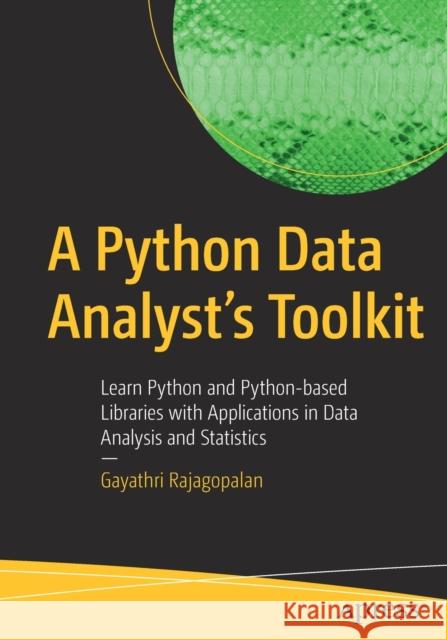A Python Data Analyst's Toolkit: Learn Python and Python-Based Libraries with Applications in Data Analysis and Statistics » książka
topmenu
A Python Data Analyst's Toolkit: Learn Python and Python-Based Libraries with Applications in Data Analysis and Statistics
ISBN-13: 9781484263983 / Angielski / Miękka / 2020 / 399 str.
A Python Data Analyst's Toolkit: Learn Python and Python-Based Libraries with Applications in Data Analysis and Statistics
ISBN-13: 9781484263983 / Angielski / Miękka / 2020 / 399 str.
cena 206,13 zł
(netto: 196,31 VAT: 5%)
Najniższa cena z 30 dni: 206,62 zł
(netto: 196,31 VAT: 5%)
Najniższa cena z 30 dni: 206,62 zł
Termin realizacji zamówienia:
ok. 16-18 dni roboczych.
ok. 16-18 dni roboczych.
Darmowa dostawa!
Kategorie:
Kategorie BISAC:
Wydawca:
Apress
Język:
Angielski
ISBN-13:
9781484263983
Rok wydania:
2020
Ilość stron:
399
Waga:
0.72 kg
Wymiary:
25.4 x 17.78 x 2.18
Oprawa:
Miękka
Wolumenów:
01
Dodatkowe informacje:
Bibliografia
Wydanie ilustrowane
Wydanie ilustrowane











